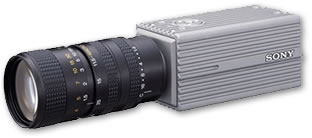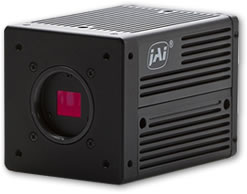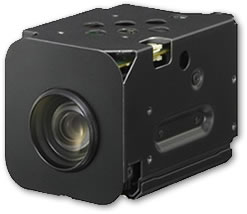 For decades, doomsayers have been predicting that machines would one day rule the world. Movies like Terminator and The Matrix introduced this concept into our cultural vernacular and scared the daylights out of plenty of impressionable kids. Fortunately, machines haven't yet turned on their real-world human overlords.
For decades, doomsayers have been predicting that machines would one day rule the world. Movies like Terminator and The Matrix introduced this concept into our cultural vernacular and scared the daylights out of plenty of impressionable kids. Fortunately, machines haven't yet turned on their real-world human overlords.
No one's saying that machines would do a better job as actors, painters or philosophers, but maybe it's time to admit that they're actually better at some things. Machine vision cameras are a case in point. Unlike the evil-looking eye scanner that Arnold Schwarzenegger's Terminator cyborg employed to detect human prey, machine vision cameras are downright helpful. There's no shame in admitting that they're better-equipped to perform a range of important inspection and scanning applications than the human eyes on which they're modeled.
The market for camera components and machine vision systems is on a tear. As such, it's worth taking a look at the rapidly expanding list of applications for which they're suited. As their processing power and sensitivity have increased, they've become ubiquitous on assembly floors and in quality-control departments. The speed and accuracy with which they're able to inspect components, finished goods and packaging bar codes has endeared them to cost-conscious, time-strapped plant managers and engineers.
Over the past couple of decades, machine vision systems have replaced human inspectors in many high-volume manufacturing and quality-control situations. This isn't a case of automation usurping human workers' roles on the factory floor: Most "replaced" workers stay on as station supervisors, technicians, or inspectors for high-sensitivity inspection jobs that can't easily be automated.
Although some machine vision cameras don't excel with variably sized inspection targets or poorly lit environments, next-generation cameras use integrated image-processing applications and powerful processors to recognize irregularities and inconsistencies in a wide range of conditions. The Sony XCI-SX1 uses a powerful 258 MB SDRAM card and a progressive scan CCD to make sense of the world. With partial scan, binning and trigger delay functions to complement built-in safeguards against shocks and vibrations, the XCI-SX1 can adapt to a variety of positioning modes and inspection speeds.
to complement built-in safeguards against shocks and vibrations, the XCI-SX1 can adapt to a variety of positioning modes and inspection speeds.
JAI's AT-030MCL is also way more than a glorified bar code reader. Whereas the XCI-SX1 is known for its incredible processing power, the AT-030MCL is renowned for its ability to deliver hi-fidelity color resolution. It is the fastest 3CCD color camera on the market today and has a high dynamic range with sharp spectral bands. If you are examining pharmaceuticals or looking at the color of the latest Entertainment Weekly this is the camera for you.
Sony's FCB-EH3150 might as well be wearing night vision goggles. Since it excels in low-light environments, this device is especially useful for internal inspections of bulky finished products as well as nighttime security operations. Its 12x optical zoom capabilities and 1/4 Exmoor CMOS sensor combine with a 1.43 million pixel capacity. Even better, its automatic luminosity sensor can trigger an internal lighting apparatus in low-light conditions. As if that wasn't enough, the FCB-EH3150's color enhancement system enables the device to read small type in a variety of conditions. Whether it's reading license plates as a traffic-light camera or inspecting shipping labels on the w arehouse floor, this device does its job faster and more accurately than even the most capable human workers.
arehouse floor, this device does its job faster and more accurately than even the most capable human workers.
The Sony XCI-SX1, JAI AT-030MCL and Sony FCB-EH3150 are just the tip of the machine vision iceberg. There are hundreds of similar devices on the market, and the technology that supports their inspection and analysis activities continues to become more sensitive and sophisticated. We haven't quite moved into the realm of science fiction, but we're getting closer every day. Who knew the machines of the future would be so helpful?
